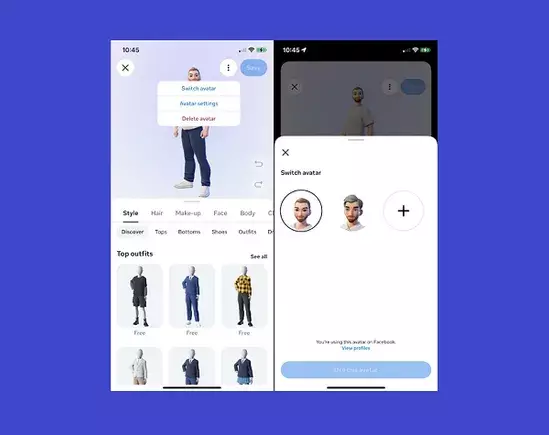In an era where digital presence increasingly mirrors our real lives, the concept of personal avatars has transcended mere novelty. Meta’s platform has taken a significant step forward by enabling users to create and manage multiple versions of their avatars. This seemingly simple feature touches on deeper psychological and social strategies for self-expression, identity presentation, and engagement within online environments. While some might dismiss it as a superficial gimmick, the ability to craft varied digital personas offers profound opportunities for authentic communication and creative exploration.
Meta’s commitment to evolving its avatar ecosystem indicates a recognition of the complex ways people wish to be seen and interacted with across different digital spaces. By allowing multiple avatars, users can curate their appearance to suit distinct contexts—from professional interactions to casual social exchanges or even imaginative role-playing. This flexibility empowers users to craft a digital identity that aligns with their mood, personality, or desired public image, rather than conforming to a one-size-fits-all profile picture.
Customization as a Reflection of Authenticity
One of the most compelling aspects of Meta’s multi-avatar feature lies in its robust customization options. The platform doesn’t merely offer superficial aesthetic choices; it provides a vast palette encompassing body types, facial features, hairstyles, facial hair, makeup, and accessories like freckles, face paint, and traditional adornments. These tools allow for unprecedented levels of personalization, enabling users to craft aliases that feel true to their unique identities or explore alternative personas.
This variety is particularly relevant in digital communities that prioritize authenticity or self-expression. For some, multiple avatars serve as expressive outlets—one might reflect their personal style, while another embodies a more playful or fantastical version of themselves. For others, these avatars become a means of experimenting with different cultural identities or social roles in a safe, accessible way. While critics might argue that such customization could foster superficial interactions, a more optimistic perspective recognizes it as a pathway toward deeper self-awareness and experimentation.
Implications for Social Interaction and Digital Creativity
Meta’s expanding avatar toolkit is not just about aesthetic choices; it signals a broader shift towards immersive digital experiences. As the company develops its metaverse ambitions, these avatars will likely serve as foundational building blocks for richer, more engaging interactions. The introduction of new body types, dynamic poses, emotes, and even generative AI tools for clothing and facial features indicates a future where digital self-representation becomes increasingly sophisticated and integral to online life.
This technological progression opens up possibilities that go far beyond playful customization. For content creators, brand ambassadors, and virtual influencers, having a diverse array of avatars means being able to connect with audiences through more personalized, varied personas. For everyday users, it transforms casual postings into expressive art forms—using Facebook stickers, Instagram stories, or Messenger chats as platforms for nuanced self-expression.
Yet, it is worth critically examining whether the rapid proliferation of avatar options truly enhances genuine interaction or if it risks reinforcing superficiality. As the visual and aesthetic boundaries become increasingly elastic, the challenge lies in cultivating authentic connections amidst a sea of customizable facades. The danger exists that our digital avatars might overshadow authentic personality, leading to a fragmented or superficial digital identity. Nonetheless, when used thoughtfully, multiple avatars could serve as mirrors of the multifaceted nature of human identity—allowing us to navigate different social terrains more comfortably and creatively.
The Future of Personal Identity in the Digital Age
Meta’s ongoing enhancements to avatar creation tools underscore a larger trend: the blurring of lines between the physical and digital self. As augmented reality (AR) and virtual reality (VR) become more mainstream, these avatars will play a central role in how users explore and present their identities across diverse digital landscapes.
The ability to switch between multiple versions of oneself isn’t merely a luxury; it’s a testament to our desire for adaptability. In a world where social expectations and personal aspirations often clash, digital avatars provide a safe space for experimentation and self-discovery. The more we refine these tools, the more they can serve as extensions of our authentic selves—or as creative outlets for exploring alternative identities. As Meta continues to invest in this space, it’s clear that digital personas will become as nuanced and varied as our real-world identities, shaping the future of online interaction in profound ways.

